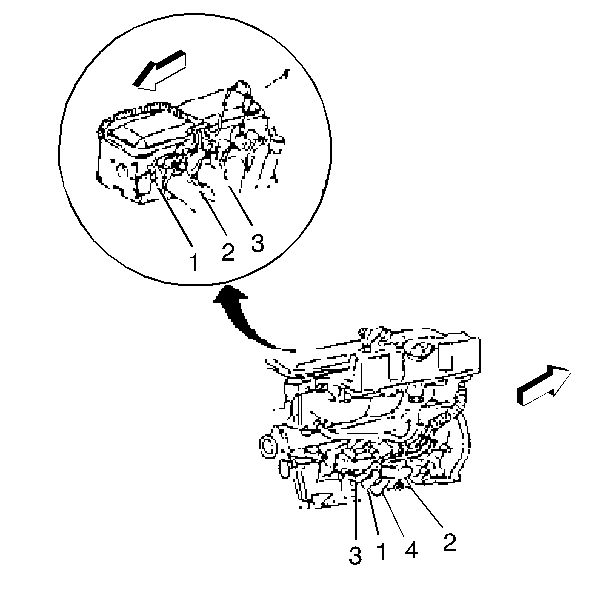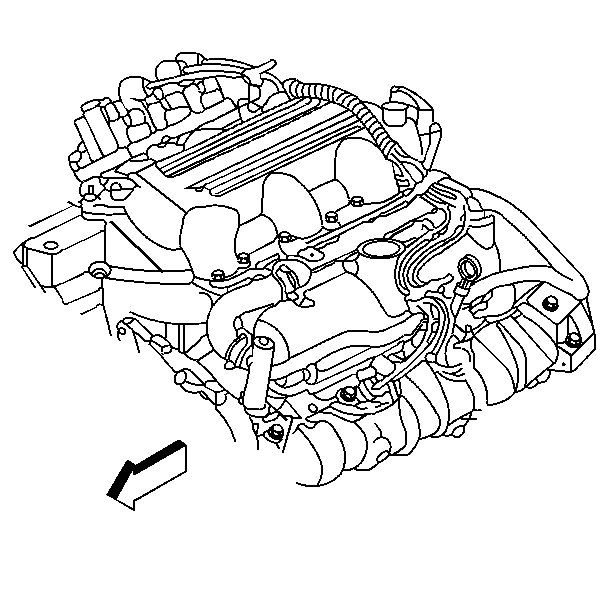Spark Plug LN2
Removal Procedure
- Turn the ignition key OFF.
- Remove foreign material from around the spark plug holes.
- Remove the spark plug using a spark plug socket.

Installation Procedure
- Adjust the spark plug gap using a round wire type spark plug gap gauge. While gapping the plug be sure to keep the platinum pads aligned to ensure maximum plug life.
- Install new plugs and tighten properly.
- Reapply dielectric lubricant to the insulator boot.

Tighten
Tighten to 18 N·m (13 lb ft).
Notice: Use the correct fastener in the correct location. Replacement fasteners must be the correct part number for that application. Fasteners requiring replacement or fasteners requiring the use of thread locking compound or sealant are identified in the service procedure. Do not use paints, lubricants, or corrosion inhibitors on fasteners or fastener joint surfaces unless specified. These coatings affect fastener torque and joint clamping force and may damage the fastener. Use the correct tightening sequence and specifications when installing fasteners in order to avoid damage to parts and systems.
Spark Plug L82
Removal Procedure
- Turn the ignition key OFF.
- Remove foreign material from around the spark plug holes.
- Remove the spark plug using a spark plug socket.

Installation Procedure
- Adjust the spark plug gap using a round wire type spark plug gap gauge. While gapping the plug be sure to keep the platinum pads aligned to ensure maximum plug life.
- Install new plugs and tighten properly.
- Reapply dielectric lubricant to the insulator boot.

Tighten
Tighten to 18 N·m (13 lb ft).
Notice: Use the correct fastener in the correct location. Replacement fasteners must be the correct part number for that application. Fasteners requiring replacement or fasteners requiring the use of thread locking compound or sealant are identified in the service procedure. Do not use paints, lubricants, or corrosion inhibitors on fasteners or fastener joint surfaces unless specified. These coatings affect fastener torque and joint clamping force and may damage the fastener. Use the correct tightening sequence and specifications when installing fasteners in order to avoid damage to parts and systems.
